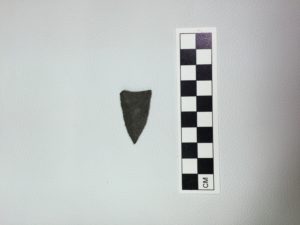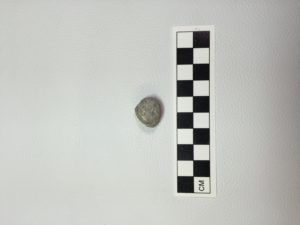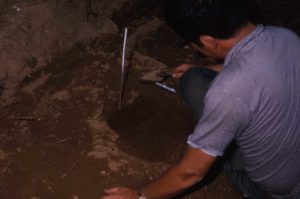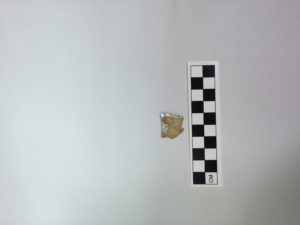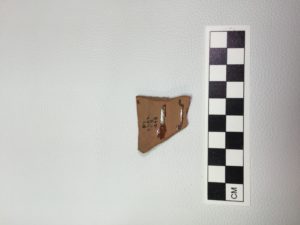Kirby Brook
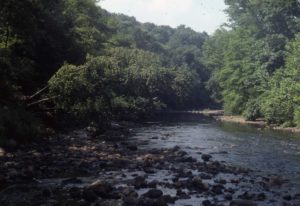
The Kirby Brook site is located in Washington, CT and situated along a terrace overlooking the Shepaug River. Archaeological evidence from Kirby Brook suggest that its earliest occupants lived during the Terminal Archaic period and that it was continuously occupied through the contact period. Before it was purchased by European settlers, the Kirby Brook site was a part of the Pootatuck tribal homelands. It was first excavated by professional archaeologist David Thompson and later Edmund K. Swigart, co-founder of the American Indian Archaeological Institute, now the Institute for American Indian Studies. These projects yielded thousands of artifacts as well as several post molds. These findings provided archaeologists with valuable information about how past people constructed homes and interacted with the surrounding environment.
Prehistoric people of the Eastern Woodland built homes called weetoos or wigwams that were supported by wooden posts buried 12-18 inches in the ground. Due to the high acidity levels of New England soils, organic materials such as those used to construct wigwams decompose at a rapid rate. Fortunately however, there are still ways for archaeologists to identify wigwam remains. As the large posts supporting these structures decay, they leave behind distinct circular stains that are commonly referred to as post molds. Archaeologists can often figure out the size and shape of a wigwam by studying the patterns formed by post molds and “connecting the dots.”
Aside from providing information about wigwam construction, Kirby Brook is also significant because it demonstrates continuous occupancy by Native American and Euro-American peoples dating from the Terminal Archaic period through the mid 19th century. Prior to European arrival, Kirby Brook was an integral component of Pootatuck subsistence as it was one of the only settlements they used to exploit the natural resources of their homelands.
Tracing the Kirby Brook site through the historic record highlights stark differences between European-American and Pootatuck land use. The colonists wanted to stay on the purchased land full time, rather than move seasonally like their Native counterparts. This year-round settlement pattern reflected a much different concept of land management than that held by Native Americans. Indigenous communities did not believe in individual ownership of land. Rather, they believed that their land was given to the tribe by the Creator who intended it to be shared by all tribal members. When the Pootatuck sold their land to the Europeans, they thought that they conceived of land ownership the same way. Instead of permanently transferring it, they perceived the transaction as signifying the incorporation of the Europeans into their pre-existing systems of tribute relations. Conversely, the European settlers believed that because they purchased the land, they could use it as however they saw fit. This fundamental ideological difference would prove to be one of the most detrimental issues that underscored Native- Colonial relations across North America.
Citations
Kenneth T Howell
1971 From the Pootatuck Indians to the Indian Diggings at Kirby Brook Site in Washington, Connecticut. Unpublished.
Edmond K. Swigart
1973 The Kirby Brook Site (6-LF-2): An Interim Report. Bulletin of the Archaeological Society of Connecticut Number 38: 40-76.
